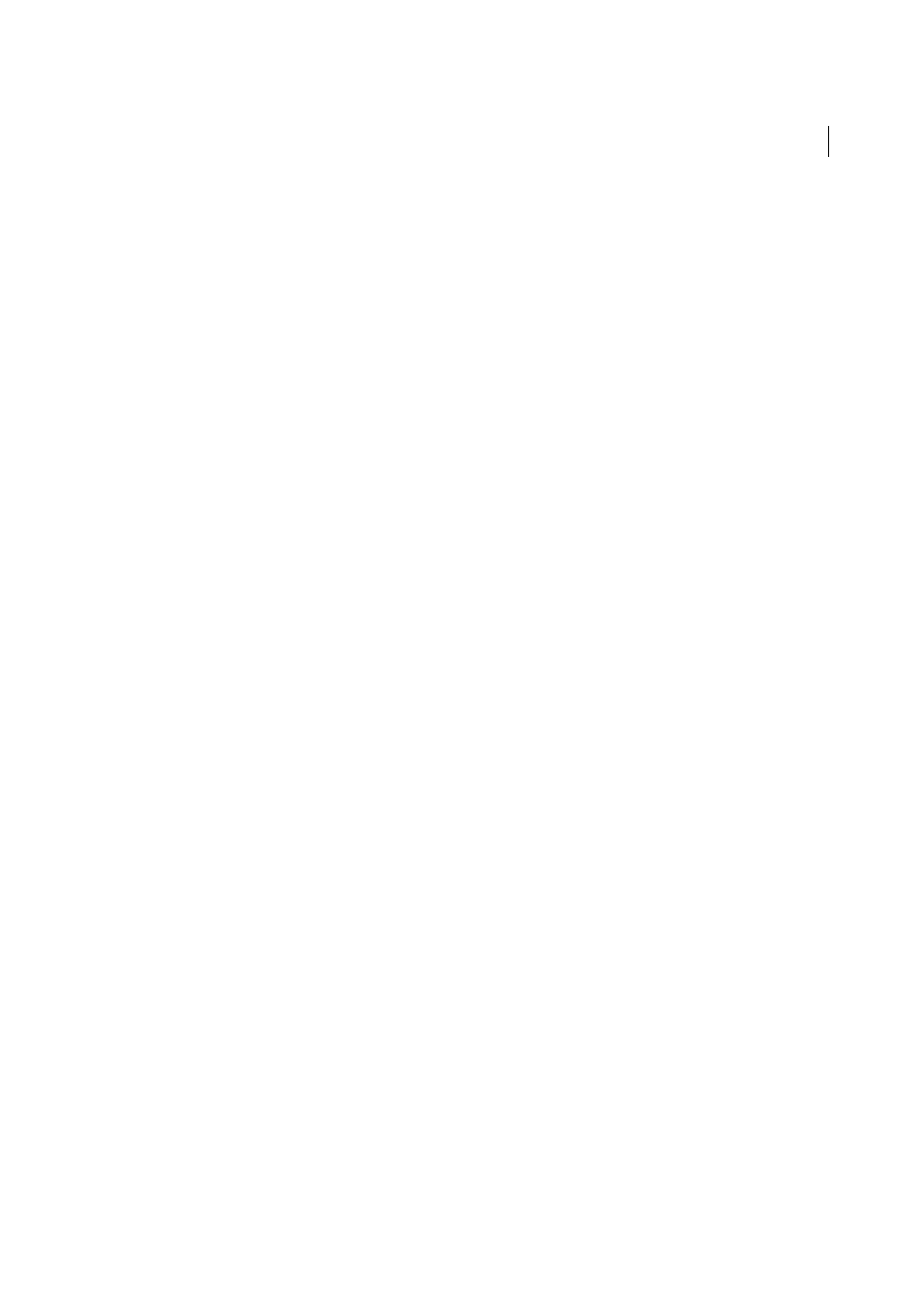Select the touch up reading order tool, Tips for using the touch up reading order tool, Touch up reading order options – Adobe Acrobat XI User Manual
Page 457

450
Accessibility, tags, and reflow
Last updated 1/14/2015
• Remove nonessential content, such as ornamental page borders, from the logical structure tree
To perform advanced reading order and tagging tasks, such as fixing complex tables, removing obsolete tags, and
adding alternate text to links, use the Tags panel. The panel contains an alternate set of tools and features for
manipulating PDF tags. For more information, see
Select the Touch Up Reading Order tool
• Choose Tools > Accessibility > Touch Up Reading Order to select the Touch Up Reading Order tool.
Tips for using the Touch Up Reading Order tool
• Save the document (or a copy of it) before you use the Touch Up Reading Order tool. You can’t use Undo to reverse
changes made with this tool, so reverting to a saved document is the only way to undo such a change.
• Choose View > Page Display > Single Page View, when using the Touch Up Reading Order tool. When you click the
Clear Page Structure button, Acrobat clears tags from all visible pages, even pages that are only partially visible.
For additional tips on working with reading order, see Donna Baker’s
.
Touch Up Reading Order options
You can select Touch Up Reading Order options from the dialog box, from the pop-up menu that appears when you
right-click a highlighted region, or from the options menu in the Order panel. The Touch Up Reading Order tool
includes the following options:
Text
Tags the selection as text.
Figure
Tags the selection as a figure. Text contained within a figure tag is defined as part of the image and screen
readers don’t read it.
Form Field
Tags the selection as a form field.
Figure/Caption
Tags a selected figure and caption as a single tag. Any text contained in the tag is defined as a caption.
Useful for tagging photos and captions and preventing caption text from being incorrectly added to adjacent text
blocks. Figures may require alternate text.
Heading 1, Heading 2, Heading 3, Heading 4, Heading 5, Heading 6
Tags the selection as a first, second, third, fourth,
fifth, or sixth level heading tag. You can convert heading tags to bookmarks to help users navigate the document.
Table
Tags the selection as a table after the selection is analyzed to determine the location of headings, columns, and
rows.
Cell
Tags the selection as a table or header cell. Use this option to merge cells that are incorrectly split.
Formula
Tags the selection as a formula. Because speech software may handle formula tags differently from normal
text, you may want to add a description using alternate text.
Background
Tags the selection as a background element, or artifact, removing the item from the tag tree. That way, it
doesn’t appear in the reflowed document and screen readers don’t read it.
Table Editor
Automatically analyzes the selected table into cells and applies the appropriate tags. The table must be
tagged as a table before you can use the Table Editor command on it.
Show Page Content Groups
Shows content elements as highlighted areas that contain numbers to indicate the reading
order. Specify the highlight color by clicking the color swatch.
Show Table Cells
Highlights the content of individual table cells. Specify the highlight color by clicking the color
swatch.